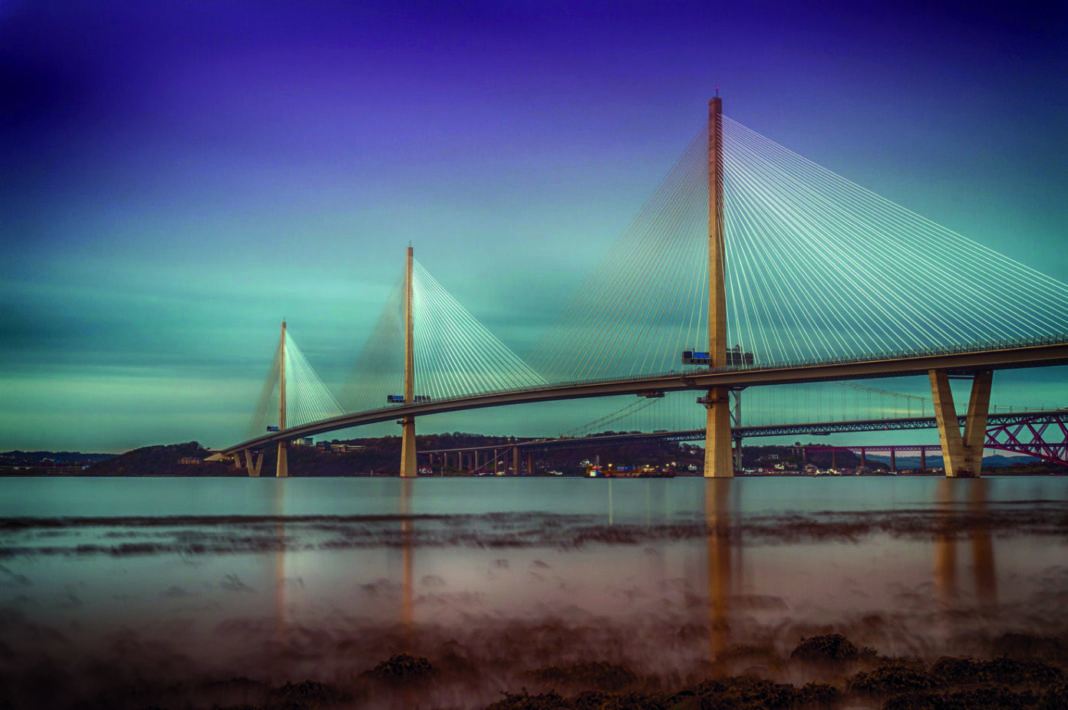
CABLES on the north tower of the Queensferry Crossing are to be washed with soap and water in a bid to stop the formation of ice on the bridge.
The crossing has been forced into closure three times since its opening in 2017, due to the risk of falling ice that had formed on its towers and cables during adverse weather conditions.
Engineers from BEAR Scotland will now investigate whether or not the soiling of the bridge’s cable is acting as a catalyst for the formation.
The firm will abseil to the top of the 207-metre concrete north tower and use soap and water to wash down the high-density polyethylene sheaths which encase the steel strands of the cables.
It anticipates that the project will take five to six weeks to complete, with 96 cables in total being cleaned – measuring a combined length of over 15 miles.
Further to this, France’s Scientific and Technical Centre for Building (CSTB) will measure the impact of the work on a full-size section of Queensferry Crossing cable, as well as analysing specialised coatings and deicing compounds.
Chris Tracey, BEAR Scotland’s unit bridges manager for south east Scotland, said, “Since the Queensferry Crossing opened to traffic, dust and dirt has accumulated on the cables. These tiny particles may be helping ice to accrete as crystals form around them.
“The first cables were installed in 2015 and there are no records of any ice forming on them until 2019.
“By cleaning the cables on one tower we will be able to measure the impact this has. As part of the project, thermal cameras are being installed at the top of each tower to monitor and measure any formation of ice.
“On this occasion the cleaning will be carried out by rope access technicians, however work is also progressing on the design of a machine to carry out this task in future, should the trial prove successful.
“We appreciate that some drivers may find the reduced speed limit during the works frustrating, however this is an essential safety measure and will only be implemented when necessary.”









